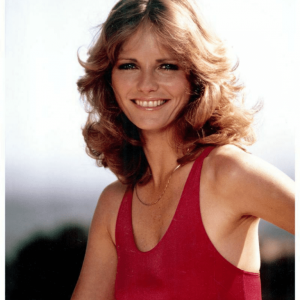Road House (1989) may not have been an instant critical success, but over the years, it has developed a loyal cult following. Packed with over-the-top action sequences, memorable one-liners, and larger-than-life characters, the film stands as a prime example of the thrilling action cinema of the 1980s.
One of the defining features of Road House is its fight scenes. Whether it’s the smooth but brutal Dalton (Patrick Swayze) or the ruthless Brad Wesley (Ben Gazzara), the movie showcases some of the most unforgettable brawls in film history. Let’s take a closer look at the best fight scenes in Road House, how they were choreographed, and why they remain legendary to this day.
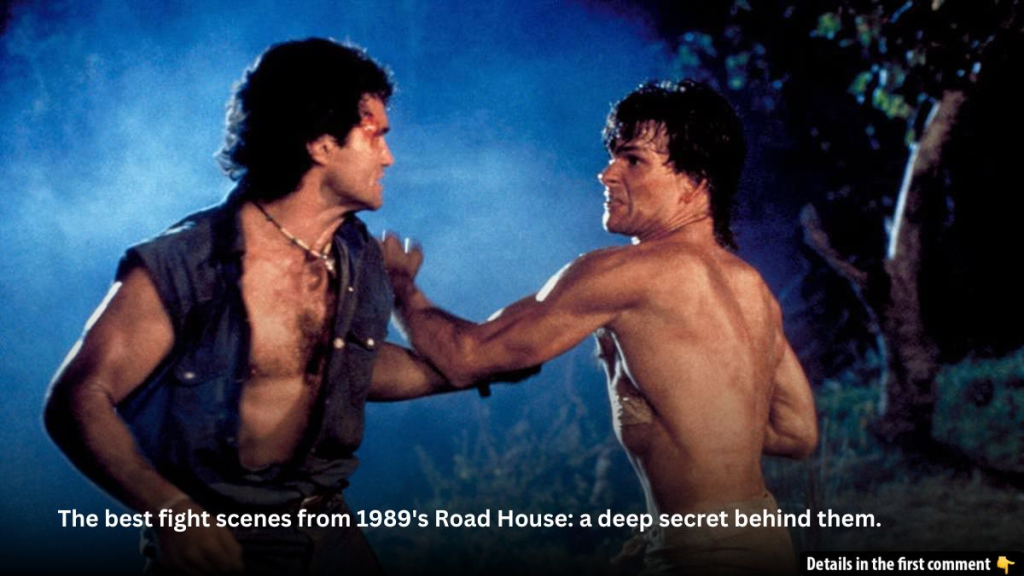
A Cult Classic Fueled by Action
Released in 1989, Road House follows James Dalton, a tough but philosophical bouncer hired to clean up a notoriously rowdy bar in a small town. The town, however, is under the grip of a corrupt businessman, Brad Wesley, whose control leads to constant clashes.
The film blends action with drama, using raw violence alongside moments of quiet reflection, particularly through the character of Dalton. A skilled fighter who believes in using violence only as a last resort, he tries to bring order without unnecessary brutality—until he’s left with no choice.
While the movie initially struggled at the box office, it gained popularity through cable television and home video. Over time, its fight scenes became a hallmark of ’80s action films, earning it a place in cinema history.
Video: ROAD HOUSE (1989) Best Fight Scenes Compilation | Patrick Swayze 80’s Action Movie
Dalton vs. Jimmy Reno: The First Major Brawl
One of the most intense fights in Road House is between Dalton and Jimmy Reno (Marshall Teague), Brad Wesley’s enforcer. Jimmy is more than just a typical thug—he’s a cold-blooded killer and a formidable fighter.
The battle between Dalton and Jimmy is both psychological and physical, setting a high bar for the movie’s fight sequences. The two exchange brutal blows in a raw, unpolished style that makes the fight feel incredibly real. Patrick Swayze, who had training in martial arts, performed most of his own stunts, which added to the authenticity.
Interestingly, both Swayze and Teague sustained real injuries during filming. Swayze landed a spinning kick that cracked Teague’s eye socket, and in return, Teague broke Swayze’s ribs. Their dedication to realism is one of the reasons this fight remains one of the most memorable in action cinema.
Dalton vs. Brad Wesley: The Final Showdown
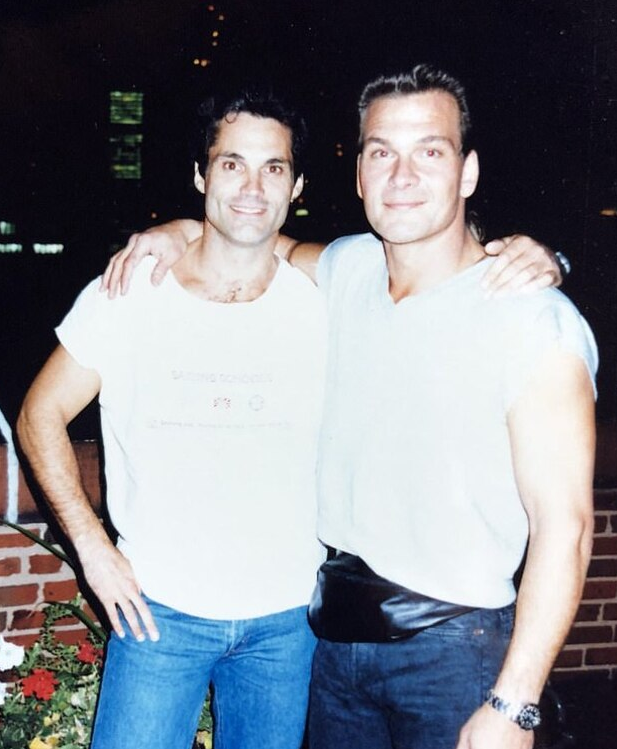
The film builds up to an epic showdown between Dalton and Brad Wesley, the villain who has terrorized the town. Wesley is not just a crime boss—he’s a man who enjoys watching others suffer, and Dalton is the only one willing to stand up to him.
The final fight is a culmination of all the tension built throughout the movie. Unlike the bar brawls earlier in the film, this fight is personal. Dalton, having lost close friends to Wesley’s reign of terror, lets go of his usual restraint. The choreography reflects this shift—his movements are more aggressive, his attacks more brutal.
The setting of the fight adds to the intensity. It takes place inside Wesley’s mansion, symbolizing the final confrontation between order and chaos. By the time Dalton overcomes Wesley, the town’s nightmare is finally over. The raw emotion and brutal fight choreography make this scene a fitting and unforgettable climax.
The Brutality Behind the Scenes: Real Injuries, Real Fights
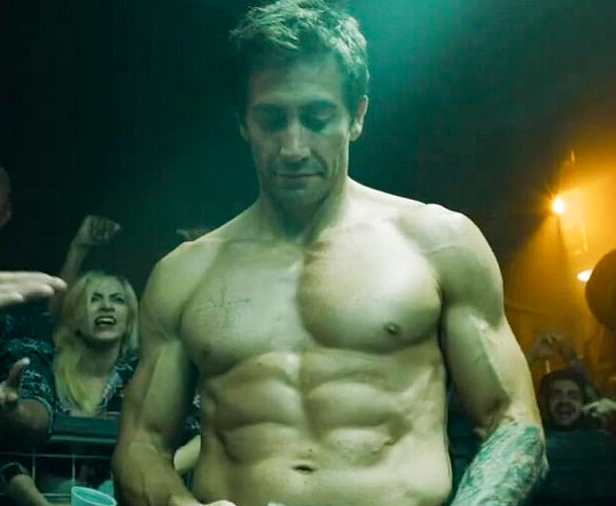
What sets Road House apart from other action films of the time is the level of realism in its fight scenes. Unlike many Hollywood fights that rely on flashy but unrealistic moves, Road House used real martial arts techniques.
Patrick Swayze, who trained in kickboxing and Taekwondo, performed his own stunts and insisted on making the fights feel authentic. Co-star Marshall Teague recalled how Swayze refused to “pull punches,” leading to actual injuries on set.
The fight between Dalton and Jimmy, filmed over five nights, was especially grueling. Swayze’s commitment to making the battle as real as possible led to bruised ribs, swollen joints, and even an eye injury for Teague.
This dedication to realism is a big reason why Road House fight scenes still hold up today.
Dalton’s Fighting Style: A Blend of Philosophy and Martial Arts
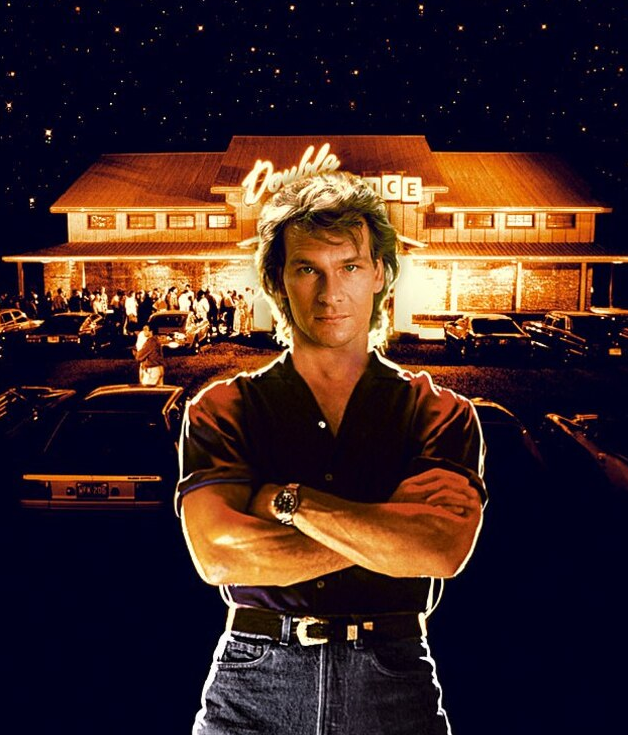
One of the most interesting aspects of Road House is how it presents Dalton as a fighter. He is not just a bouncer but a man trained in martial arts who follows a strict code of discipline.
Dalton’s approach to fighting is heavily influenced by Eastern philosophy. He believes in control, balance, and avoiding unnecessary violence. However, when pushed, he is more than capable of defending himself. His fighting style is a mix of kickboxing, Aikido, and Taekwondo, making his movements both fluid and powerful.
This contrast between his philosophical beliefs and his brutal fighting abilities adds depth to his character. Unlike many action heroes of the time who fight without restraint, Dalton is always aware of his actions—until he’s forced to unleash his full strength.
Why Road House’s Fight Scenes Stand the Test of Time
The fight sequences in Road House have influenced many films that followed. The mix of street fighting, martial arts, and raw, unscripted brutality set a new standard for action movies.
The film’s dedication to realistic action has made it a favorite among stunt performers and fight choreographers. Unlike modern action films that often rely on CGI or over-choreographed wirework, Road House keeps things simple and grounded, making each hit feel impactful.
Beyond the fights themselves, Road House works because it has a protagonist worth rooting for. Dalton is not just a fighter—he’s a character with depth, making every battle feel earned rather than just another excuse for action.
The Legacy of Road House and Its Fight Scenes
Video: ROADHOUSE FIGHT SCENE / WADE GARRETT
Over three decades later, Road House remains a staple of action cinema. Its fight scenes have been referenced, parodied, and celebrated in pop culture. Even those who haven’t seen the film likely recognize its famous one-liners and intense action sequences.
The film’s influence can be seen in later action movies, from bar brawls in Westerns to the hand-to-hand combat of modern thrillers. The dedication to realism, commitment to brutal but believable choreography, and unforgettable performances ensure Road House will always have a place in film history.
Conclusion: Why Road House Still Packs a Punch
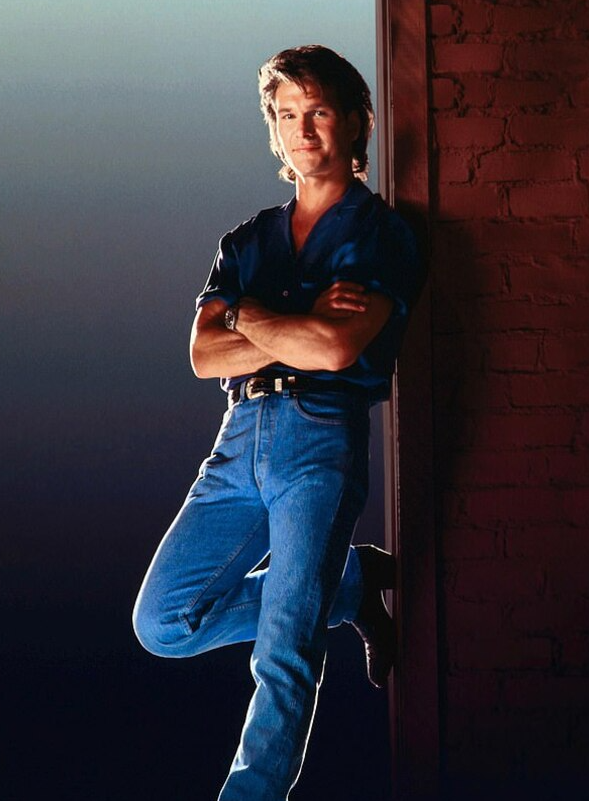
The fight scenes in Road House are more than just action—they are a defining part of the film’s identity. With their blend of raw intensity, martial arts precision, and real injuries sustained on set, these fights remain some of the most memorable in cinema history.
Patrick Swayze’s portrayal of Dalton, a fighter who values discipline over chaos, adds layers to what could have been a simple action movie. His battles, particularly against Jimmy Reno and Brad Wesley, showcase not only his skill but also his emotional investment in the fight.
More than 30 years later, Road House continues to be celebrated, proving that great action isn’t just about flashy moves—it’s about impact, authenticity, and characters worth fighting for.
